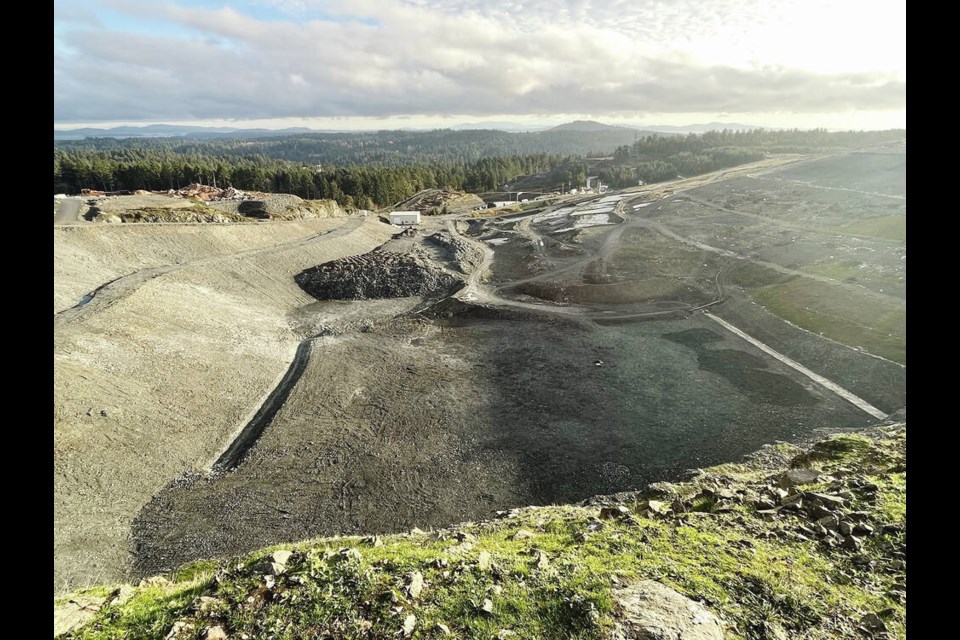The Hartland landfill is getting $10.8-million in funding to prepare the next area of the site where the region’s waste will be deposited.
A contract for work on the new space was approved this month by the Capital Regional District board.
Waste goes into specially prepared locations in the landfill called cells, which are replaced as they fill up, said Stephen May, the CRD’s senior manager of facilities and engineering services.
He said the current cell — the third, created about seven years ago — is due to be full around next October, so preparatory work is underway on a fourth cell that has a base area covering the equivalent of about five Canadian football fields.
“Cell number 3 is reaching the end of its design capacity,” he said, adding: “This is all within the approved operating boundary — this is not an expansion in any way.”
Two more cells, which include roads and access points for vehicles, will be created in adjacent spots as they are needed, May said.
Combined with cell 4, they will have the capacity to accept waste until about 2048.
May said there will be a bit of overlap with the use of the current cell and cell 4 as the transition is made next year.
Shaping of the bottom of the new cell with removal of rock is already underway.
The recently approved $10.8 million will go to installation of a synthetic liner that goes across the bottom and sides of the cell to collect leachate generated by the waste, May said.
Other elements of the cell include aggregate material and clay to form layers at various key depths and grades.
May said every effort is made to compact and shred materials going into the landfill “so we can to squeeze as much into the area as possible.”
To reduce the flow of waste, recyclables like mixed paper and kitchen scraps, concrete and drywall are banned from the landfill, which receives about 180,000 tonnes of solid waste each year.
The current design is expected to be able to accept waste until 2100.
The CRD environment committee has endorsed a staff report to increase the general tipping fee for waste to $150/tonne from $110/tonne on Jan. 1, along with measures intended to further reduce the waste flow, such as banning clean wood from the landfill.
Also proposed is a ban, set to come into effect July 1, on treated wood, carpet and underlay, and asphalt shingles — although they could still be accepted at $110/tonne for reuse or recycling.
Other steps proposed for Jan. 1 include increasing the fine for improper disposal of banned materials to $500, while bringing in a procedure in which bylaw staff would issue warning tickets for the first two offences.
The report now goes to the CRD board for final consideration.



